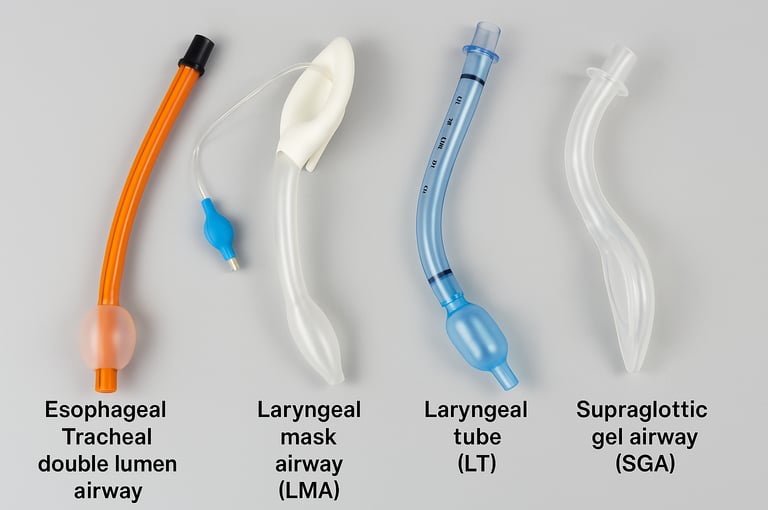A Comprehensive Guide to Blind Insertion Airway Devices
4/5/20251 min read


What is a Blind Insertion Airway Device?
A blind insertion airway device (BIAD), often referred to as a blind insertion device, is a crucial medical implement designed for airway management. It provides an unobstructed pathway between a patient’s lungs and the external environment, which is pivotal during emergencies or surgical procedures. One of the key advantages of these devices is that they can be placed without the need for direct visualization of the glottis, making them exceptionally valuable in situations where time and precision are critical.
Key Features of BIADs
Blind insertion airway devices are engineered with specific features that enhance their effectiveness. These include a cuff that assists in sealing the airway to prevent aspiration, thereby keeping the lungs safe from foreign materials. Moreover, the designs often incorporate dual-lumen structures that allow for ventilation while ensuring adequate oxygenation. These devices come in various sizes to accommodate a range of patients, making them suitable for both adult and pediatric use. It is pivotal to select the appropriate size to ensure effectiveness and patient comfort.
How to Select the Right Blind Insertion Airway Device
Choosing the appropriate BIAD requires consideration of several factors. Firstly, it is essential to assess the patient's anatomy and size, as improper sizing can lead to airway complications. Medical professionals are often trained to recognize the signs of anatomical variations that may necessitate a different approach. Secondly, the intended use—whether for emergency care or while transporting a patient—should also inform the selection process.
Additionally, familiarity with various brands and models of blind insertion devices can aid in making a better choice. Each device may offer unique benefits, such as improved cuff design or enhanced ventilation capabilities. Furthermore, manufacturers often provide guidelines and recommendations based on clinical scenarios, which can further assist users in selecting the right BIAD for a specific situation.
Finally, it is critical to practice using these devices in a controlled environment. Simulation can significantly enhance a clinician's proficiency and comfort level when employing blind insertion airway devices in real-life scenarios. Continuous training and evaluation of skills add to the safety and efficacy of patient outcomes.
